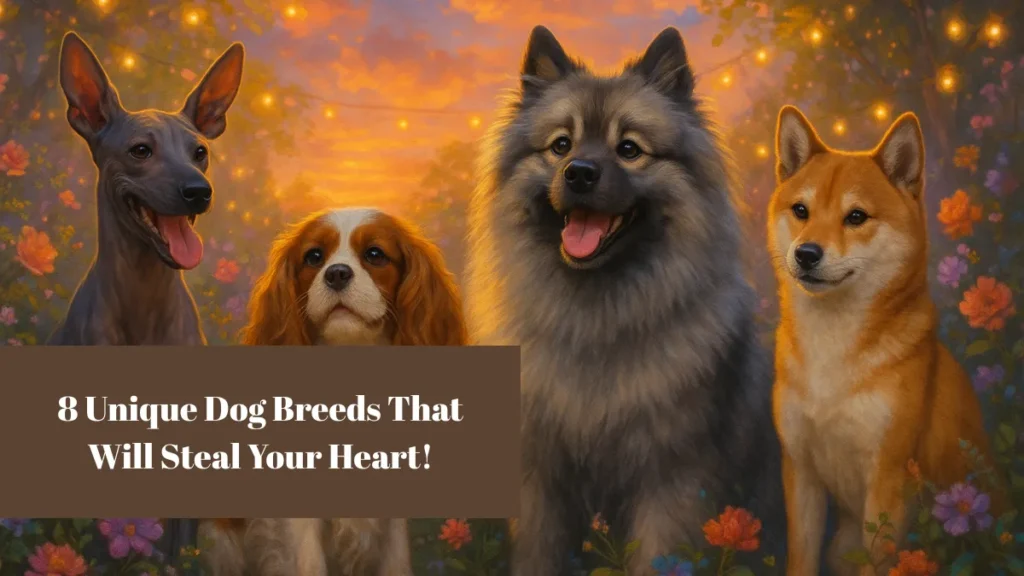Owning a dog is a rewarding experience, but some breeds come with unique challenges that require special care and attention. Whether it’s health concerns, grooming needs, or temperament issues, certain dogs can be more demanding than others. If you’re considering bringing a dog into your home, it’s important to understand the extra responsibilities that come with specific breeds.
In this blog, we’ll explore seven dog breeds known for their extra challenges, including the Shar Pei, Xoloitzcuintli, Chihuahua, Chow Chow, Dalmatian, Komondor, and Siberian Husky. From intense grooming routines to health conditions and behavioral quirks, these dogs are not for first-time dog owners. However, with the right knowledge and commitment, these breeds can make loyal and loving companions.
1. Shar Pei
The Shar Pei is a unique breed known for its deeply wrinkled skin and distinctive “hippopotamus” face. However, beneath their cute and comical appearance lies a breed with special needs that can present challenges to owners. One of the biggest concerns is their skin. The deep folds of their skin can trap moisture, dirt, and bacteria, creating an ideal environment for infections.
Regular cleaning and drying of the folds are crucial to prevent skin issues like pyoderma, a bacterial skin infection. Additionally, their eyes are prone to entropion, a condition where the eyelids roll inward, causing irritation. This often requires surgery to correct. While the Shar Pei is an affectionate and loyal dog, their health and grooming needs can make them more challenging for new or busy pet owners.
2. Xoloitzcuintli
The Xoloitzcuintli, or Mexican Hairless Dog, is an ancient breed with a distinctive appearance. This breed’s lack of fur makes it prone to skin issues, such as sunburns and dryness. Their skin requires regular moisturizing and protection from sun exposure, which can be time-consuming and costly. Moreover, this breed has a tendency to develop allergies, making them susceptible to rashes and irritations, especially when exposed to harsh environments.
On top of that, Xolos are known to have a strong, independent nature, which may require a dedicated, experienced owner to train and manage their behavior effectively. Without sufficient mental stimulation and socialization, Xolos can become aloof or destructive, making them better suited for owners with previous dog experience.
3. Chihuahua
Chihuahuas, while small and adorable, come with their own set of challenges. Due to their tiny size, they can be easily injured, and owners must be cautious when handling them, as they are prone to bone fractures. Chihuahuas also tend to develop dental problems, which are common in small breed dogs. Regular teeth cleaning and dental checkups are essential to prevent tooth loss and gum disease.
Another challenge with Chihuahuas is their intense loyalty and attachment to their owners. This often results in separation anxiety, leading to behaviors like excessive barking, destructive chewing, or even house soiling when left alone. Their strong-willed nature also means they can be difficult to train, requiring consistent, patient owners who can address behavioral issues effectively.
4. Chow Chow
The Chow Chow is a majestic, lion-like breed known for its thick, dense coat, which, while beautiful, requires a significant amount of grooming. Their coat tends to mat easily, which necessitates regular brushing to prevent tangles and mats. Without proper grooming, the coat can become uncomfortable and lead to skin infections. Chow Chows are also notorious for their aloof nature and independent temperament, which can make training difficult.
They are not always eager to please and may ignore commands, making early socialization and consistent training essential. Additionally, Chow Chows are prone to health issues such as hip dysplasia, eye conditions, and autoimmune diseases. This breed requires an experienced owner who can manage their grooming needs and stubborn personality.
5. Dalmatian
Dalmatians are famous for their striking black spots and high energy levels, but they also come with several challenges. One of the biggest issues is their predisposition to deafness, with a significant portion of the breed being born with hearing impairments. Deaf Dalmatians require extra care, specialized training, and an owner who is prepared to use hand signals or vibrations to communicate.
Additionally, Dalmatians are prone to urinary stones and require a specific diet and plenty of water to prevent these issues. Their high energy levels also mean they require substantial exercise to remain mentally and physically healthy. Without enough activity, Dalmatians can become destructive or develop behavioral issues. They are best suited for active families or individuals who can meet their exercise and training needs.
6. Komondor
The Komondor is a unique breed known for its distinct corded coat, which can look like a mop. While this coat serves as excellent protection against predators in their native Hungary, it requires significant grooming. The cords must be separated and maintained regularly to prevent matting and skin issues. If neglected, the coat can become heavy and uncomfortable, causing the dog distress.
Komondors are also large, strong dogs with a natural instinct to protect, which can make them difficult to handle for inexperienced owners. They are protective of their family and property and can be aggressive towards strangers. Training a Komondor requires a firm and confident approach, and they do best in homes where they can be given clear boundaries and consistent leadership.
7. Siberian Husky
Siberian Huskies are known for their striking appearance, often with a thick coat and blue or multicolored eyes, but their beauty comes with challenges. Huskies are highly energetic and require plenty of exercise to avoid boredom and destructive behaviors. Without enough physical and mental stimulation, they can become escape artists, finding ways to break out of enclosures and run away.
Their thick fur, while well-suited for cold climates, also requires regular grooming to prevent matting and to manage shedding, which occurs year-round. Huskies are also independent and stubborn, making training a challenge for inexperienced owners. While they are generally good with families, their high prey drive means they might not do well with small animals or other pets unless socialized from an early age. Their vocalization, including howling, can also be a challenge for some owners who are sensitive to noise.
Bottom Line
While these seven dog breeds may come with extra challenges, they also bring unique qualities that can make them wonderful pets for the right owner. Understanding their specific needs—whether it’s grooming, health care, or behavioral training—can help ensure a successful and fulfilling relationship. If you’re up for the extra effort, these breeds offer great companionship and loyalty.
FAQs
What makes the Shar Pei a challenging breed to own?
The Shar Pei’s deep skin folds require regular cleaning to prevent infections. They’re also prone to eye issues, like entropion, which often needs surgical correction.
Why is the Xoloitzcuintli considered high maintenance?
The Xoloitzcuintli has sensitive skin and needs protection from sunburns and moisturizing to prevent dryness and irritation.
Are Chihuahuas difficult to train?
Chihuahuas can be stubborn and prone to separation anxiety, making training and behavior management a challenge for some owners.
Do Siberian Huskies make good pets for families?
Siberian Huskies are great with families but require plenty of exercise and mental stimulation. Without it, they can become destructive or escape artists.


